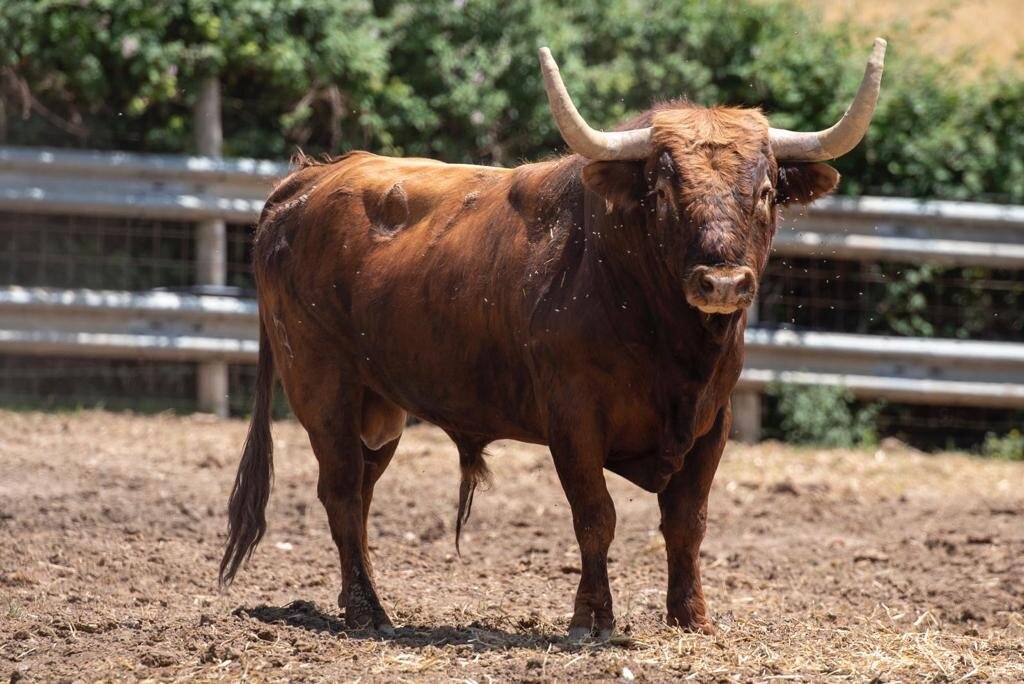Torista plazas to the fore
Vic-Fezensac 2017: A bull of Dolores Aguirre en varas
It wasn’t so long ago that Spain’s taurine magazines looked upon the French ferias of Vic-Fezensac and Céret with bemusement. “You mean to say there are ferias in France where people are asked to confirm their abonos simply on the basis of the ganaderías that are set to appear and long in advance of any announcement as to which toreros have been contracted?” I can imagine a Spanish empresario exclaiming, shaking his head. Yes, and they draw significant numbers of aficionados keen to acquaint themselves with minority encastes, to revel in properly organised tercios de varas and to see toreros do their best with the four-legged challenges confronting them. It’s a different type of market than that of the commercial Spanish corrida, and, sadly, one that no corrida empresa appears prepared to foment in Spain.
Spanish coverage of these ferias has, however, been improving in recent years and it was good to see Vic and Céret both get significant reportage on-line earlier this month.
Thanks to Covid, Vic’s feria was delayed from its traditional dates on Pentecost weekend until early July and shortened to just four events - a novillada picada and three corridas, one a concurso. The first and last bulls of the feria - a novillo of Raso de Portillo and a toro from José Escolar - were each awarded with a posthumous vuelta of the ring, while the concurso was a disappointment, featuring beautiful-looking animals that didn’t perform well in the tercio de varas or the faena, the prize for the best bull being withheld. The awards for the toreros were typically sparse, José Cabrera taking a vuelta in the novillada; the ever-popular López Chaves earning an ear and two vueltas after facing bulls of Hoyo de la Gitana; and Gómez del Pilar ending as the feria triunfador after cutting two ears from that escolar. Since last year, the madrileño has been consolidating a reputation as a suitable participant in corridas of ‘toros duros’.
Céret saw two corridas and a novillada concurso. Raso de Portillo again featured as a ganadería, this time of toros bravos, but disappointed. The novillada, in which the histrionic Francisco Montero faced all six animals on a very windy morning, also produced little of merit, a vuelta given to a novillo from Barcial being protested.
One of Miguel Reta’s bulls for Céret (Céret publicity photo)
Céret’s main draw this year, however, was an opening corrida of bulls of the casta navarra, fielded by Miguel Reta. The event had been held over from the cancelled feria of 2020, the bulls too, the cuadrillas confirming their willingness to appear with animals that were now six years old.
The casta navarra was one of the foundational breeds of bullfighting, comprising relatively small animals, usually red or brown, that were nervous, quick-turning and energetic, but which, towards the end of the 19th century, were deemed by Guerrita and other leading matadors as unsuited for toreo. The casta is still seen in street events, but is now generally not bred for bullfighting.
Scenes from Céret’s 2003 novilladas with casta navarra bulls
The last time Céret had featured the casta navarra was in 2003, when animals from ‘La Bomba’, ‘El Ruedo’ and Arriazu took part, the last in a novillada con picadores and the first two in a sin pics. According to accounts, apart from their age and trapío (Miguel Reta’s aim being not only to recover the encaste, but to develop animals fit for today’s corrida in terms of their size and armament), this year’s animals were much the same as I saw then - perhaps not so mobile, but distracted, inconsistent in their charges, unpredictable and dangerous. One young lad was physically sick at the prospect of facing these animals: at least this year’s encounter saw more experienced toreros given the task. Three of Reta’s bulls were given banderillas negras after the picadors had trouble bringing them forward to the horse. Miguel Ángel Pacheco and one of his banderilleros were both caught and tossed. The only award was a vuelta al ruedo for Sánchez Vara after some lances and muletazos to the fourth bull - the only one prepared to lower its head and follow the cloth, but nevertheless a complicated animal that Vara had to enter three times to kill.
Yet, the majority of Céret’s highly knowledgeable spectators left the plaza satisfied with what had occurred - just as they had in 2003. To see the casta navarra in the bullring is to be transported back to the 18th century, an opportunity to view the toreo of those times, seeing toreros use their brains, arms and legs to ward off danger and achieve a lidia. There is not a single dull moment as those on the sand have to think on their feet and improvise in order to cope with these animals and escape injury.



